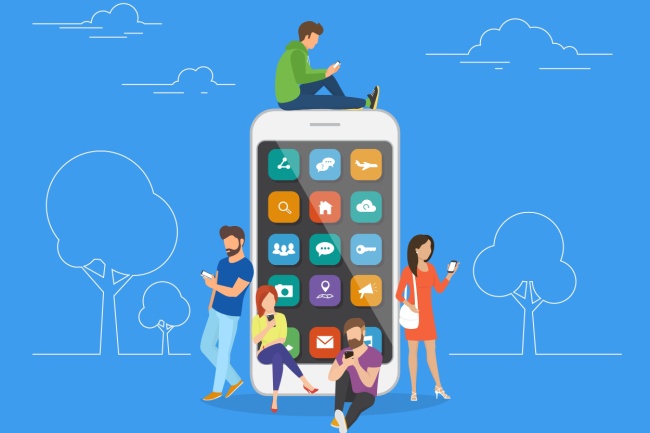Do you provide members with ample self-service options? Many consumers prefer to manage their insurance needs independently and rely on a customer service representative only when needed for more complex concerns. When deployed effectively, self-service can be a win-win – saving time for both the member and the health insurance provider. The key is effective deployment. Potential pitfalls, such as poor user design or security issues, must be avoided.
Preferences Shifting Toward Self-Service
Now that consumers have grown accustomed to instant, 24/7 services, they are less tolerant of having to wait. Instead of calling a company and being put on hold, many people would rather go online and find the answers they need for themselves.
According to Gartner, 28% of customers say that if they can’t find a solution for themselves online, they’re more likely to quit rather than to reach out to a customer service representative for help. Among Generation Z, this figure surges to 39%. Additionally, roughly one in four people will try calling, but they’ll give up if they are on hold for too long.
If health plan members give up on getting the information they need, they might struggle to use their plan. They could miss out on benefits, or they could be surprised by coverage issues, leading to disputes and dissatisfaction.
While members like the speed and convenience of self-service, insurers can also benefit from the cost-savings.
Running a call center is expensive, especially when you factor in labor, hiring costs, office space, software and hardware expenses. If insurers can reduce demand on their call centers, they can save money – while potentially even improving member experience and satisfaction.
Self-Service Applications in Health Insurance
Several common health insurance inquiries can already be managed through self-service features on the carrier’s member portal or app. For example, most health insurance members can access policy documents and membership cards, update contact information, check to see if a provider or facility is in network verify coverage, and more.
However, online self-service tools are not always easy to find or navigate. They also may not facilitate an omnichannel experience, in which members can easily switch between various communication channels.
The Omnichannel Ideal
Members can do a lot online with the right tools, but sometimes human assistance is needed. For example, consider a situation involving a member who needs an essential prescription, but can’t locate it on the plan’s formulary. The member is likely very stressed and needs a solution quickly. Ideally, the member should be able to instantly initiate a chat or phone call to get the high touch support that is needed at that point in time.
Even less urgent situations may need human support. For example, a member might want to know why something wasn’t covered or might be experiencing technical difficulties while making a payment. Self-service platforms will be more highly utilized when it’s easy for members to easily transition to other modes of assistance.
Sometimes the reverse scenario is also true. For example, a member calls in to get a quote to add an ancillary product to their plan. The quote is provided, but the member wants to think about it before deciding. The representative should be able to text or email a link to the member so they can resume and complete the transaction when they’re ready.
In every instance, the transition to a new communication channel should be seamless, so the customer service representative can see all the info the member entered during the self-service portion of the encounter. Members should never be asked to repeat steps they’ve already taken.
Personalization
Self-service is more likely to be utilized when members receive meaningful recommendations based on their behavior and preferences. AI can provide an increased level of personalization and support for a more tailored experience.
AI-powered personalization has the potential to significantly improve member engagement. Although some members may continue to be more comfortable navigating their benefits on their own, they may overlook critical options and information that could help improve their health and manage costs. AI tools that make highly personalized and targeted recommendations can help members get the most of their benefits and support programs.
For example, Fierce Healthcare says many health plans offer wellness programs, but members don’t always take advantage of them. To address this issue, one virtual care navigation platform is leveraging generative AI to provide one-on-one support.
Security, Privacy and Accuracy
In a highly regulated industry like health insurance, security, accuracy, and HIPAA compliance are non-negotiable. As you craft your self-service strategy, front and center will be the protection of sensitive data, the prevention of potential hacks, and the crucial need for accuracy.
How Health Insurers Can Craft a Successful Self-Service Strategy
A successful self-service strategy needs:
- A user-friendly interface
- Easy to understand and accurate information about coverage and cost
- A way to quickly connect with a human representative if self-service fails
- Seamless omnichannel options
- Personalized experiences and recommendations
- Strong security, privacy and accuracy measures
Are your systems up to the task to deliver on a self-service strategy that drives improved member engagement? FJA’s modular platform provides a strong and adaptable technological foundation, enabling carriers to leverage the new technologies and integrations they need to meet evolving customer expectations. Learn more.
Related Posts
November 24, 2025
Reinsurance at a Turning Point: RAPA Reflections
Today’s reinsurance market sits around $220 billion. Within the next decade,…
October 7, 2025
The Documentation Dilemma: Navigating Complexity in a Changing Landscape
In the world of health insurance, documentation is both a regulatory necessity…
July 7, 2025
How Insurers Can Appeal to Generational Preferences to Boost Member Satisfaction
When health plan members need help, they want to be able to use the…


